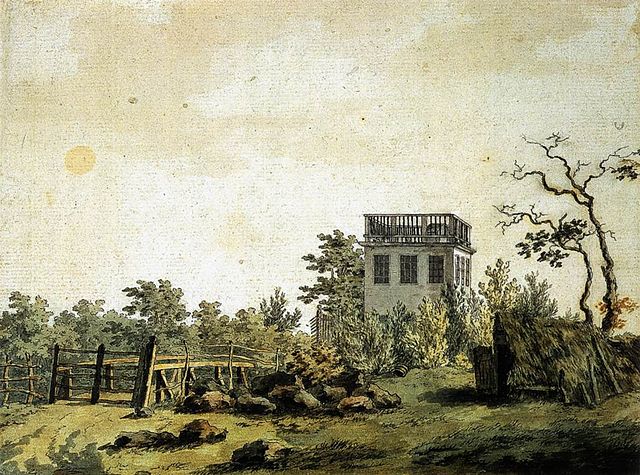Caspar David Friedrich was a German Romantic landscape painter, generally considered the most important German artist of his generation. He is best known for his allegorical landscapes, which typically feature contemplative figures silhouetted against night skies, morning mists, barren trees or Gothic ruins. His primary interest was the contemplation of nature, and his often symbolic and anti-classical work seeks to convey a subjective, emotional response to the natural world. Friedrich's paintings characteristically set a human presence in diminished perspective amid expansive landscapes, reducing the figures to a scale that, according to the art historian Christopher John Murray, directs "the viewer's gaze towards their metaphysical dimension".
Gerhard von Kügelgen's portrait of Friedrich, c. 1808, Hamburger Kunsthalle
Caspar David Friedrich, by Christian Gottlieb Kuhn (1807), Albertinum, Dresden
Wanderer above the Sea of Fog (1818), Kunsthalle Hamburg
Landscape with Pavilion (1797). This early work shows typical themes: ragged landscape, closed gate, building of uncertain purpose.
German Romanticism was the dominant intellectual movement of German-speaking countries in the late 18th and early 19th centuries, influencing philosophy, aesthetics, literature, and criticism. Compared to English Romanticism, the German variety developed relatively early, and, in the opening years, coincided with Weimar Classicism (1772–1805).
Caspar David Friedrich, (1774–1840) Moonrise by the Sea, 1822, 55x71 cm
Angelica Kauffman, Johann Wolfgang von Goethe, 1787
Moritz Daniel Oppenheim Heinrich Heine, 1831, Kunsthalle Hamburg
Joseph von Eichendorff








